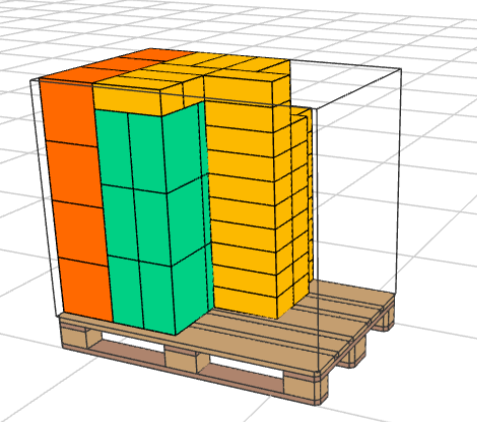Logistics in the food industry
_1.png)
The food industry faces many challenges every day. One of them is the storage and organization of transport of FMCG (Fast Moving Consumer Goods), i.e. fast-moving goods, usually with a short expiration date. Such specificity of the industry requires careful logistic planning.
Fast-moving consumer goods, apart from food, also include household chemicals, over-the-counter drugs, and even tobacco and cigarettes. The sale of these types of articles is therefore very resistant to any crises, because we are sure that there will always be a demand for them. The industry, due to the very high competition, offers a huge variety of assortment and a relatively low price. Properly planned logistics and transport are therefore essential in this type of sector.
Logistics in the food industry
 The process of delivering goods to individual customers usually begins at the warehouse, where deliveries from the wholesaler are accepted. The products are then divided into smaller portions and appropriately packaged and placed in the right place. The food industry typically uses several types of packaging. Small food products, e.g. products in jars, are packed in larger cartons or containers, and then assembled depending on the order or the needs of a given recipient. Products prepared in this way are placed on pallets and then secured with stretch. Fruit and vegetables, on the other hand, are usually delivered in crates or box-pallets. Therefore, appropriately selected containers for the type of products are very important. Otherwise, the goods may be damaged during transport. Then, the prepared products usually go straight to transport. However, sometimes they are waiting for an order in stock, so it is worth knowing how to properly store these types of products. In the food industry, the FEFO (First Expired, First Out) technique is used, according to which the items in the warehouse are arranged in such a way that the goods with the shortest expiration date leave the warehouse first. Thanks to this, possible losses in the assortment are eliminated.
The process of delivering goods to individual customers usually begins at the warehouse, where deliveries from the wholesaler are accepted. The products are then divided into smaller portions and appropriately packaged and placed in the right place. The food industry typically uses several types of packaging. Small food products, e.g. products in jars, are packed in larger cartons or containers, and then assembled depending on the order or the needs of a given recipient. Products prepared in this way are placed on pallets and then secured with stretch. Fruit and vegetables, on the other hand, are usually delivered in crates or box-pallets. Therefore, appropriately selected containers for the type of products are very important. Otherwise, the goods may be damaged during transport. Then, the prepared products usually go straight to transport. However, sometimes they are waiting for an order in stock, so it is worth knowing how to properly store these types of products. In the food industry, the FEFO (First Expired, First Out) technique is used, according to which the items in the warehouse are arranged in such a way that the goods with the shortest expiration date leave the warehouse first. Thanks to this, possible losses in the assortment are eliminated.
Distribution of groceries is carried out by buses, solos, and in the case of larger transports, the so-called. curtains. In addition, vehicles such as refrigerators and isotherms are often used in the FMCG industry. The main difference between the two vehicles is that the cold store freezes products at very low temperatures. In this way, they are transported frozen meat. On the other hand, the isotherm only insulates the products on the trailer from the outside temperature. In this way, products that do not require constant temperature control can be delivered. Most companies in the industry usually use their own fleet of vehicles, especially on domestic routes. However, it happens that cooperation with an external transport company is needed. Thanks to this, the company can export its own goods in any direction, without losing the cars that can deliver the goods on the spot. In addition, thanks to this, they do not have to invest in a growing fleet of their own cars, which generate huge costs for the company. Some exotic items are transported by air or sea in specially prepared rooms and containers. Thanks to this, all over the world we can enjoy products that, for example, are found only in warm climates and are difficult to grow in a greenhouse.
The FMCG industry is, of course, not only the distribution of food products to large-format stores. In the last few years, a huge number of companies offering home grocery delivery have appeared on the market, often offering free delivery. Strong competition means the need for continuous development and the search for savings. It is worth looking for them in logistics, thanks to proper planning of deliveries. Thanks to Smartload, you can plan the loading of general cargo in a quick and simple way. More on the use of the application in the food industry can be found in our article about the function for FMCG goods.